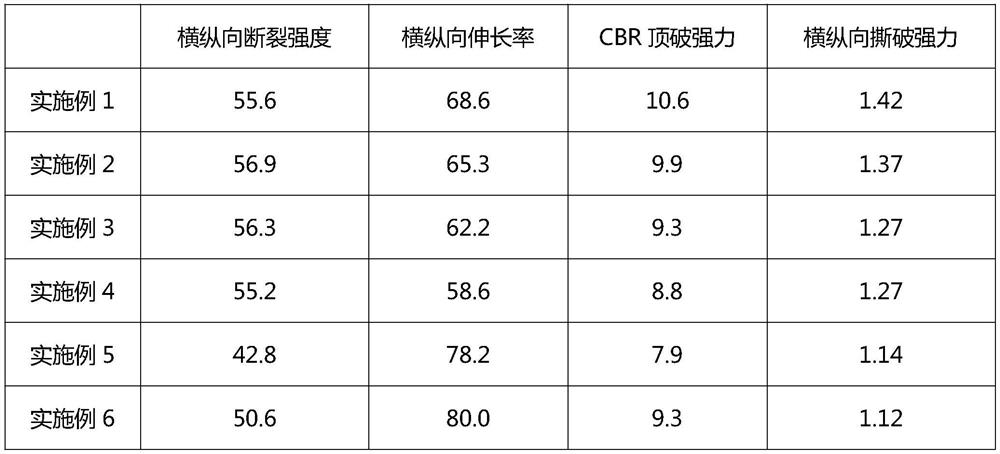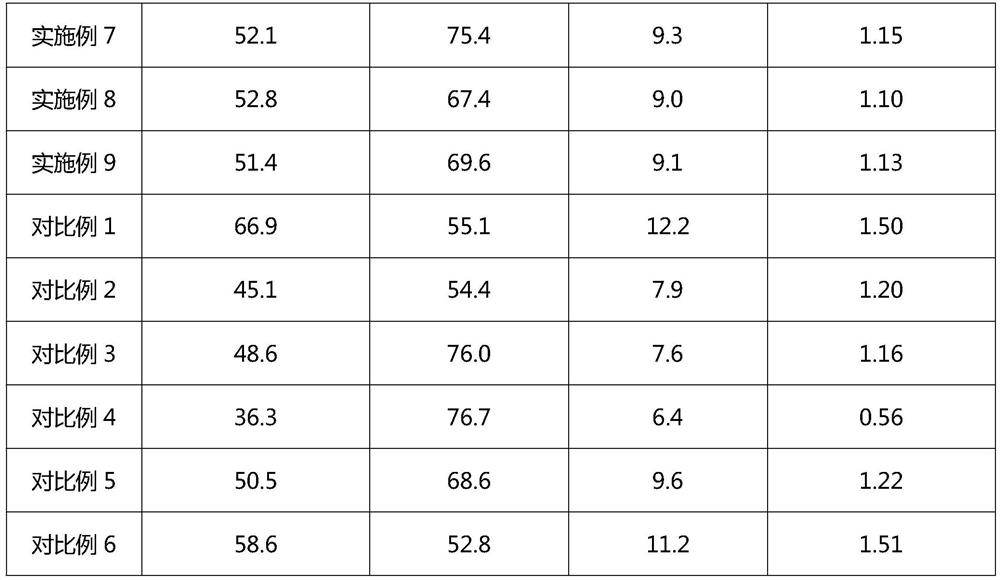Self-healing non-woven fabric
A non-woven, self-healing technology, applied in fiber types, non-woven fabrics, textiles and papermaking, etc., can solve problems such as difficult non-woven fabrics, blocked nozzles, and deterioration of wire tensile strength, and achieves improved tensile strength. Lower melt viscosity, better bonding effect
- Summary
- Abstract
- Description
- Claims
- Application Information
AI Technical Summary
Problems solved by technology
Method used
Image
Examples
Embodiment 1
[0041] A preparation process for self-repairing non-woven fabrics, comprising the following steps:
[0042] S1. Drying: drying all raw materials until the final moisture content is less than 35ppm;
[0043] S2. Pretreatment: Mix 12 parts of turpentine oil and 4.5 parts of cuprous chloride powder evenly, send them to a colloid mill to grind them into colloids, and control the temperature not to exceed 50°C;
[0044] S3. Melting: 110 parts of PET chips, 60 parts of acrylamide-maleic anhydride-acrylic acid copolymer and 4 parts of melamine are fed into melting equipment to melt, and then turpentine-chlorinated chlorinated The copper mixture, 3-4 parts of polyaluminum chloride and 4.4 parts of hydroxyl-terminated polydimethylsiloxane with a number average molecular weight of 10,000 are put into the melt and stirred rapidly, and then filtered through a melt filter with a filtration accuracy of 40 μm;
[0045]S4. Wire drawing: the melt obtained in the melting of S3 is drawn through...
Embodiment 2
[0050] A preparation process for self-repairing non-woven fabrics, comprising the following steps:
[0051] S1. Drying: drying all raw materials until the final moisture content is less than 35ppm;
[0052] S2. Pretreatment: Mix 10 parts of turpentine oil and 5 parts of cuprous chloride powder evenly, send them to a colloid mill to grind them into colloids, and control the temperature not to exceed 50°C;
[0053] S3. Melting: 100 parts of PET chips, 70 parts of acrylamide-maleic anhydride-acrylic acid copolymer and 3 parts of melamine are fed into melting equipment to melt, and then turpentine-chlorinated chlorinated Copper mixture, 4 parts of polyaluminum chloride and 3.5 parts of hydroxyl-terminated polydimethylsiloxane with a number average molecular weight of 12000) are put into the melt for rapid stirring, and then filtered through a melt filter with a filtration accuracy of 30 μm;
[0054] S4. Wire drawing: the melt obtained in the melting of S3 is drawn through the spi...
Embodiment 3
[0059] A preparation process for self-repairing non-woven fabrics, comprising the following steps:
[0060] S1. Drying: drying all raw materials until the final moisture content is less than 35ppm;
[0061] S2. Pretreatment: Mix 15 parts of turpentine oil and 3 parts of cuprous chloride powder evenly, send them to a colloid mill to grind them into colloids, and control the temperature not to exceed 50°C;
[0062] S3. Melting: 120 parts of PET chips, 50 parts of acrylamide-maleic anhydride-acrylic acid copolymer and 5.5 parts of melamine are fed into melting equipment to melt, and then turpentine-chlorinated chlorinated The copper mixture, 3 parts of polyaluminum chloride and 5 parts of hydroxyl-terminated polydimethylsiloxane with a number average molecular weight of 5000 are put into the melt and stirred rapidly, and then filtered through a melt filter with a filtration accuracy of 50 μm;
[0063] S4. Wire drawing: the melt obtained in the melting of S3 is drawn through the ...
PUM
 Login to View More
Login to View More Abstract
Description
Claims
Application Information
 Login to View More
Login to View More - R&D
- Intellectual Property
- Life Sciences
- Materials
- Tech Scout
- Unparalleled Data Quality
- Higher Quality Content
- 60% Fewer Hallucinations
Browse by: Latest US Patents, China's latest patents, Technical Efficacy Thesaurus, Application Domain, Technology Topic, Popular Technical Reports.
© 2025 PatSnap. All rights reserved.Legal|Privacy policy|Modern Slavery Act Transparency Statement|Sitemap|About US| Contact US: help@patsnap.com



